Physics is key to understanding the world around us. While some aspects may seem tricky to understand, many fundamental physics concepts can be broken down into simple concepts, some of which can be demonstrated using basic equipment at home.
This list of 5 physics experiments you can try at home is a great starting point for understanding physics and hopefully a source of inspiration for little scientists everywhere!
1. Archimedes and Density
The story behind Archimedes’ discovery of density is that he was asked by the King of Sicily to work out whether a goldsmith had replaced some gold from a crown with silver. Archimedes needed to work out if the goldsmith had cheated without damaging the crown.
The crown weighed the same as the gold the King had given the goldsmith, but gold is more dense than silver so if there was silver in the crown its density would be less than if it was pure gold. Archimedes realised that if he could measure the volume of the crown he could work out its density, but calculating the volume of a crown shape was a tough challenge. According to the story, Archimedes was having a bath one day when he realised that the water level rose as he lowered himself into the bathtub. He realised that the volume of water displaced was equal to the volume of his body in the water.
Archimedes placed the crown in water to work out its density and realised the goldsmith had cheated the king!
Density Experiment
One fun way to demonstrate density is to make a density column. Choose a selection of liquids and place them in density order, from the most dense to the least dense. Carefully pour a small amount of each into a tall jar or glass starting with the most dense. You should end up with a colourful stack of liquids!
2. Split light into the colours of the rainbow
Isaac Newton experimented with prisms and realised that light is made up of different colours ( the colours of the rainbow ). Newton made this discovery in the 1660s. It wasn’t until the 1900s that physicists discovered the electromagnetic spectrum which includes light waves we can’t see, such as microwaves, x-rays waves, infrared and gamma rays.
How to split light
Splitting white light into the colours of the rainbow sounds tricky but all you need is a prism. A prism is a transparent block which is shaped so light bends ( refracts ) as it passes through. Some colours bend more than others so the whole spectrum of colours can be seen.
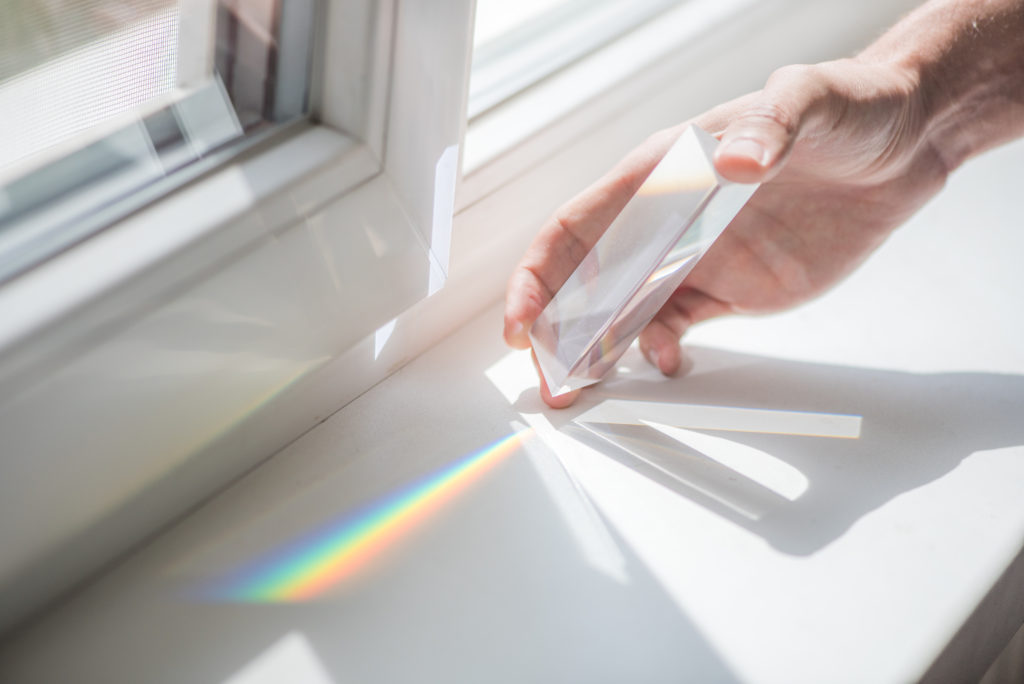
If you don’t have a prism you can also use a garden hose! Stand with your back to the sun and you’ll see a rainbow in the water! This is because drops of water act like a prism.
3. Speed of Falling Objects
Galileo’s Falling Objects
Aristotle thought that heavy objects fell faster than lighter objects, a theory that was later disproved by Galileo.
It is said that Galileo dropped two cannonballs with different weights from the leaning tower of Pisa which hit the ground at the same time. All objects accelerate at the same rate as they fall.
If you drop a feather and a hammer from the same height the hammer will hit the ground first, but this is because of air resistance!
If a hammer and feather are dropped somewhere with no air resistance they hit the ground at the same time. Commander David Scott proved this was true on the Apollo 15 moonwalk!
Hammer and Feather Experiment on the Moon
Brian Cox also proved Galileo’s theory to be correct by doing the same experiment in a vacuum!
While you won’t be able to replicate a hammer or heavy ball and feather falling you can investigate with two objects that are the same size but different weights. This means the air resistance is the same for both objects so the only difference is the weight.
Take two water empty water bottles that are the same size. Fill one to the top with water and leave the other empty. Drop them from the same height. Both will hit the ground at the same time!
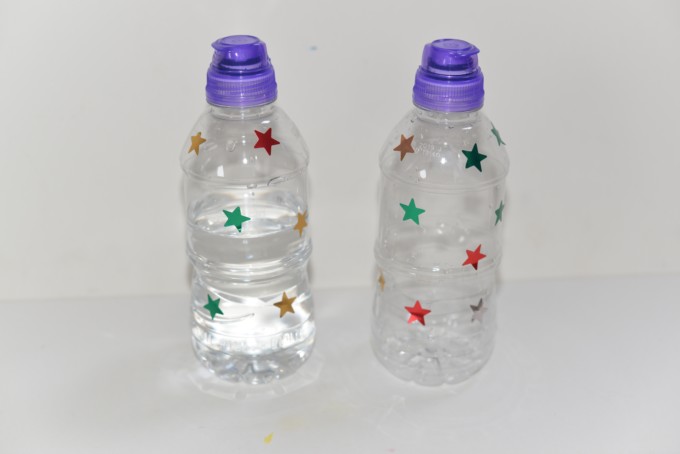
4. Newton’s Laws of Motion
Sir Isaac Newton pops up a lot in any physics book as he came up with many of the laws that describe our universe and is undoubtedly one of the most famous scientists of all time. Newton’s Laws of Motion describe how things move and the relationship between a moving object and the forces acting on it.
Making and launching a mini rocket is a great way to learn about Newton’s Laws of Motion.
The rocket remains motionless unless a force acts on it ( Newton’s First Law ).
The acceleration of the rocket is affected by its mass. If you increase the mass of the rocket its acceleration will be less than if it had less mass ( Newton’s Second Law).
The equal and opposite reaction from the gas forcing the cork downwards propels the rocket upwards ( Newton’s Third Law ).
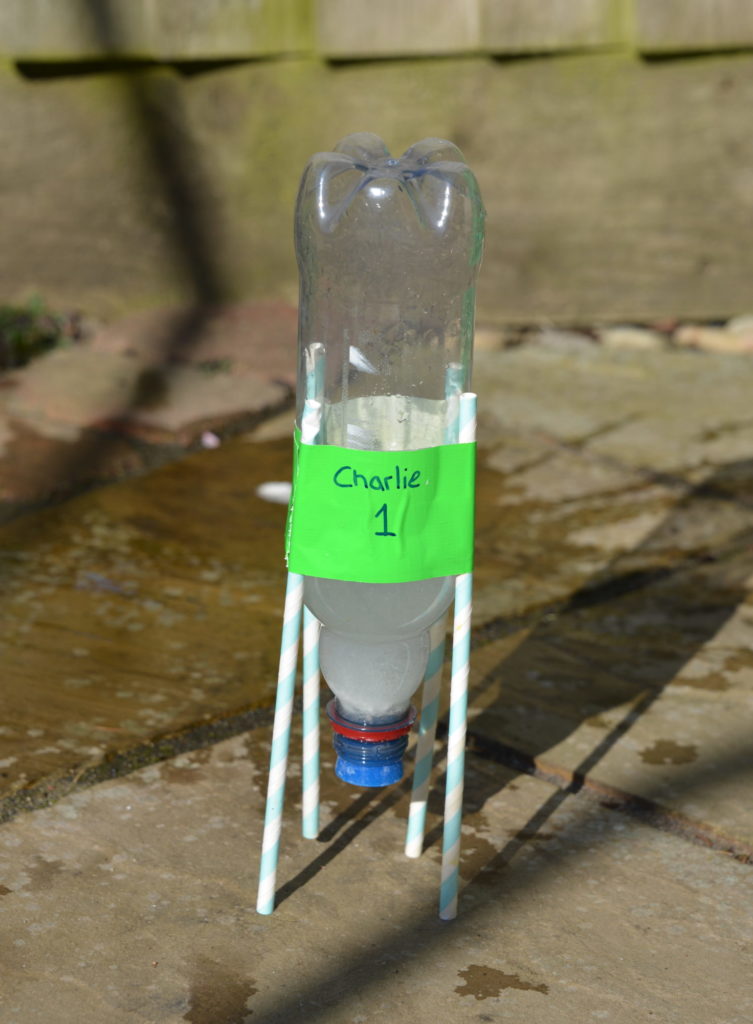
4. Pressure
Pressure is the force per unit area.
Imagine standing on a lego brick. If you stand on a large brick it will probably hurt, if you stand on a smaller brick with the same force it will hurt more as the pressure is more!
Snow shoes are usually very wide, this is to reduce the pressure on the snow so it sinks less as people walk on it.
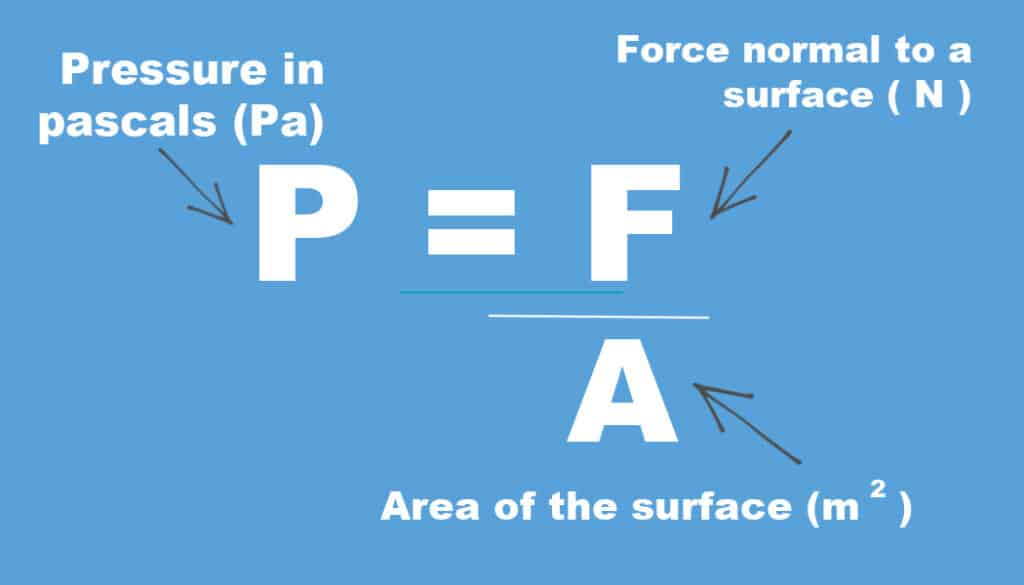
Pressure and Eggs
If you stand on one egg, it will most likely break. If you stand on lots of eggs with the same force you increase the area the force is applied over and therefore reduce the pressure on each individual egg.
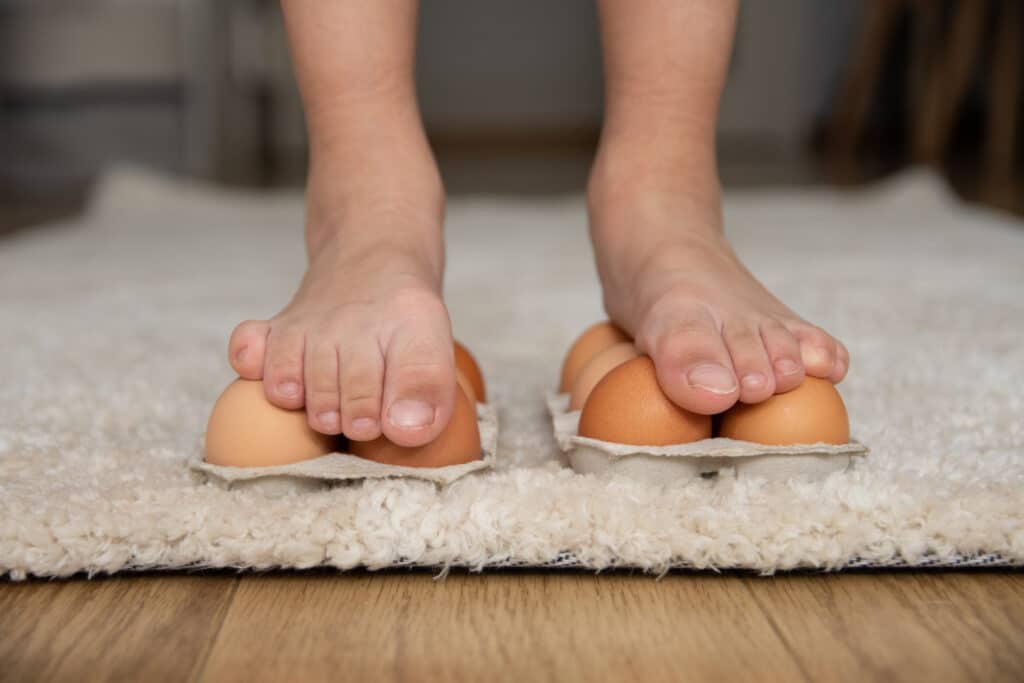
That’s five easy physics experiments you can do at home! Can you think of any more?
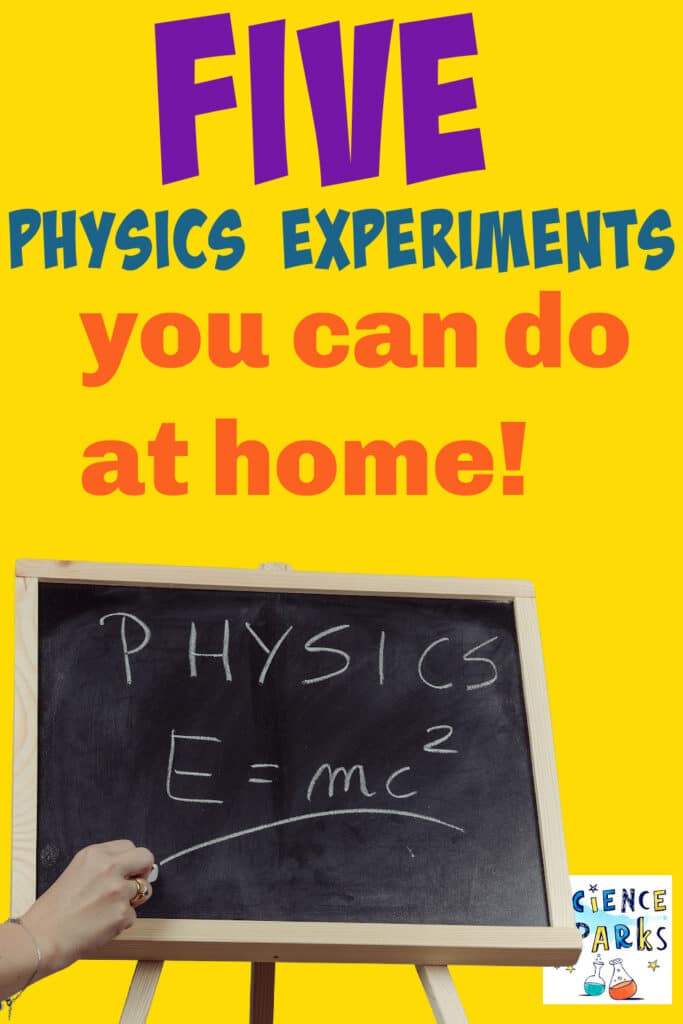
Last Updated on November 9, 2022 by Emma Vanstone